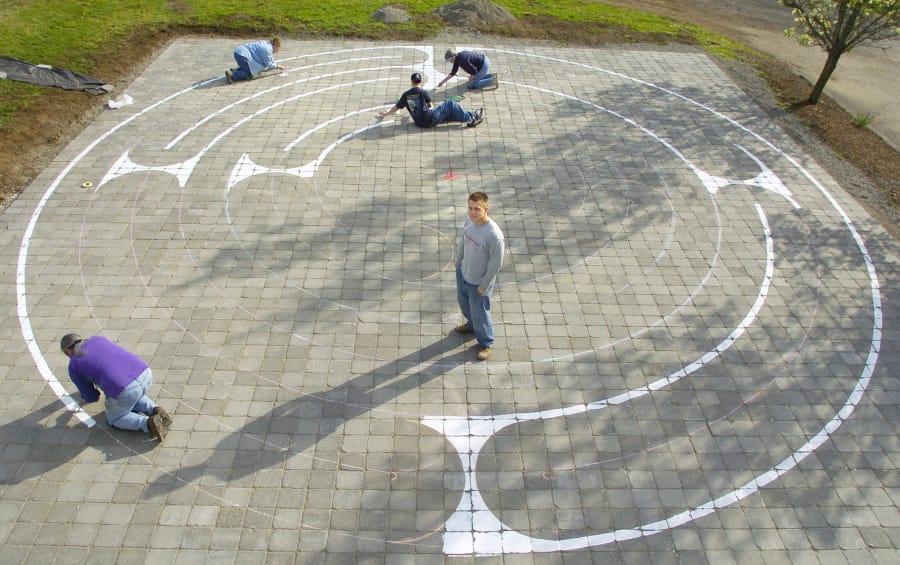There are nearly 6,000 labyrinths in this world and nearly 4,400 in the U.S., according to the World-Wide Labyrinth Locator.
They come in diverse styles: ancient or classical; Roman; St. Omar or square-edged; and even a modern, copyrighted Santa Rosa layout that includes one small, symbolic "heart space" you're supposed to contemplate but never step into.
Clark County's four permanent labyrinths all mimic the most globally popular, medieval style found at Chartes Cathedral in France, Schroeder said. But three of them also streamline that design, with only seven wide layers (circuits) of pathway between perimeter and center, rather than 11 narrow layers squeezed into the same space.
Schroeder's own portable, canvas labyrinth, which she unfolds every New Year's Day at First Presbyterian Church, is a smaller version of the Chartes layout, with all 11 layers -- but it's 36 feet wide instead of Chartes' 42.
"Other than that they are really identical," she said.
The following Clark County labyrinths are all outdoors and accessible to the public, but check with the facility about open hours and other visitor details.
• Beautiful Savior Lutheran Church, 12513 S.E. Mill Plain Blvd., Vancouver; 360-254-9243. Installed as an Eagle Scout project in 2005.
• First Congregational United Church of Christ, 1220 N.E. 68th St., Vancouver; 360-693-1476. Opened in honor of Mary Jo Morse in 2006, it's the only permanent labyrinth in Clark County that has 11 circuits, just like Chartes. "That's a beautiful one in a grove of trees," Schroeder said.
• Legacy Salmon Creek Medical Center, third-floor rooftop healing garden, 2211 N.E. 139th St., Vancouver; 360-487-1000.
• Southridge Community of Christ, 400 N.E. 179th St., Ridgefield; 360-573-5659. The newest addition, opened in September.
Two future Vancouver labyrinths are still on the way, according to Schroeder: St. Andrew Lutheran Church and Vancouver Heights United Methodist Church are planning permanent ones.
— Scott Hewitt




